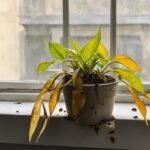Top 20 Indoor Houseplants grow in water, pros and cons, how to propagate, best container type, water change care guide, fertilizer
Indoor plants not only bring natural beauty into your living spaces but also offer several health benefits, including improved air quality and reduced stress. While many people prefer growing plants in soil, there’s a growing trend of cultivating indoor plants in water. Growing plants in water is a popular and low-maintenance way to add greenery to your home. It is also a good option for people who live in apartments or other small spaces, as it does not require a lot of room.
In this article, we will explore the best indoor plants to grow in water and provide a comprehensive guide that covers various aspects of water-based plant care.
Should you grow indoor houseplants in water?
Pros of growing indoor plants in water:
- It’s a great way to propagate plants, as the roots are easier to see and care for in water.
- It’s a low-maintenance way to grow plants, as you don’t have to worry about over- or under-watering.
- It can be a fun and creative way to display plants, as you can use different types of containers and vases.
Cons of growing house plants in water:
- Plants grown in water may not grow as large or as quickly as plants grown in soil.
- Plants grown in water are more susceptible to root rot, so it’s important to change the water regularly.
- Some plants simply don’t thrive in water, so it’s important to choose plants that are known to do well in this environment.

How do grow plants in water?
To successfully grow indoor plants in water, follow these steps:
To grow plants in water, choose the right plant because Not all plants thrive in water. Opt for plants that are known to do well water. So cut a healthy stem from the plant, making sure to remove any lower leaves. Place the stem in a clean container of water, making sure that the cut end is submerged. Place the container in a bright, indirect light location. Containers with narrow necks can help support the plant stems.
Change the water every 3-4 days, or more often if the water becomes cloudy or smelly. Be sure to rinse the roots of the plant when you change the water.
Which containers are best for growing plants in water?
There are many different types of containers that can be used to grow plants in water. Some of the most popular options include:
Glass containers:
Glass containers are a great way to display plants grown in water, as they allow you to see the roots. However, glass containers can also be more fragile and easier to break than other types of containers.
- Pros: It allows you to see the roots, a variety of shapes and sizes
- Cons: Fragile, easier to break
Ceramic containers:
Ceramic containers are another popular option for growing plants in water. They are durable and come in a variety of shapes and sizes. However, ceramic containers can also be more expensive than other types of containers.
- Pros: Durable, variety of shapes and sizes
- Cons: More expensive than plastic
Plastic containers:
Plastic containers are a lightweight and affordable option for growing plants in water. However, plastic containers are not as durable as glass or ceramic containers and can be more susceptible to scratching.
- Pros: Lightweight, affordable
- Cons: Not as durable as glass or ceramic, susceptible to scratching
When to change the water?
Change the water in your plant container every 3-4 days, or more often if the water becomes cloudy or smelly.
Does any water work?
Yes, any type of water can be used to grow plants in water. However, it’s best to use filtered or bottled water if possible, as tap water may contain chemicals that can harm your plants.
Guide to fertilizing house plants in water
Plants grown in water may need to be fertilized more often than plants grown in soil, as the nutrients in the water can be depleted more quickly. Fertilizing your water-grown houseplants is crucial for their health and growth. You can use a balanced liquid fertilizer diluted to half-strength. Fertilize your plants every 2-3 weeks during the growing season, taking care not to over-fertilize, as hydroponic plants are more sensitive to nutrients.

Top 20 best and easiest plants to grow in water
Here are some of the best and easiest plants to grow in water:
Spider plant (Chlorophytum comosum):
Spider plants are easy to care for and produce long, trailing stems, arching leaves with white stripes with baby plants at the end. Spider plants are known for their air-purifying qualities and adaptability to water culture..
Heartleaf philodendron:
Heartleaf philodendrons are another easy-care plant that can be grown in water. They have heart-shaped leaves and can grow to be quite large. Philodendrons are popular houseplants that can be grown in water.
Pothos (Epipremnum aureum):
Pothos is a versatile plant that can be grown in water or soil. It has trailing stems with heart-shaped leaves and can be variegated with white or yellow markings and it is a relatively low-maintenance plant.
Lucky bamboo (Dracaena sanderiana):
Lucky bamboo is a popular plant that is often grown in water. Lucky bamboo is known for its ease of care and elegant appearance. It’s not actual bamboo but a member of the Dracaena family. It is easy to care for and can be grown in a variety of shapes and sizes.
Chinese evergreen:
Chinese evergreens are low-maintenance plants that can be grown in water or soil. They have dark green leaves and can grow to be several feet tall.
Arrowhead Plant (Syngonium podophyllum):
Arrowhead plants have distinctive arrow-shaped leaves and are well-suited for water-based growth. They thrive in moderate to bright indirect light.
Begonia
Begonias are a large group of plants that come in a variety of shapes, sizes, and colors. Some begonias can be grown in water, while others need to be grown in soil.
Monstera deliciosa
Monstera deliciosa, also known as the Swiss cheese plant, is a popular houseplant with large, fenestrated leaves. It can be grown in water, but it will need support to keep it from falling over.
Syngonium podophyllum
Syngonium podophyllum, also known as the arrowhead plant, is a popular houseplant with arrow-shaped leaves that come in a variety of colors, including green, yellow and variegated. It is relatively easy to care for and can tolerate a wide range of conditions.
Tradescantia
Tradescantia, also known as the wandering jew, is a popular houseplant with long, trailing vines and colorful leaves. It is relatively easy to care for and can tolerate a wide range of conditions.
Coleus
Coleus is a popular houseplant with colorful leaves. It is relatively easy to care for, but it needs more sunlight than most other houseplants.
Mint
Mint is a popular herb that can be grown in water. It is relatively easy to care for and can be used in a variety of recipes.
Basil
Basil is another popular herb that can be grown in water. It is relatively easy to care for and can be used in a variety of recipes.
Rosemary
Rosemary is a popular herb that can be grown in water. It is relatively easy to care for and can be used in a variety of recipes.
Parsley
Parsley is a popular herb that can be grown in water. It is relatively easy to care for and can be used in a variety of recipes.
Sweet potato vine
Sweet potato vines are a popular houseplant with trailing vines and heart-shaped leaves. They are relatively easy to care for and can be grown in water or soil.
English ivy
English ivy is a popular houseplant with trailing vines and heart-shaped leaves. It is relatively easy to care for and can be grown in water or soil.
Peperomia
Peperomia is a large group of plants that come in a variety of shapes, sizes, and colors. Some peperomia can be grown in water, while others need to be grown in soil.
String of pearls
String of pearls is a popular houseplant with long, trailing vines and pea-shaped leaves. It is relatively easy to care for, but it needs more sunlight than most other houseplants.
Air plants
Air plants are a unique type of plant that does not need soil to grow. They can be grown in water or on a variety of surfaces, such as rocks, wood, and seashells.
With a little care, you can easily grow any of these plants in water. Growing indoor plants in water can be a rewarding and aesthetically pleasing way to enjoy the benefits of houseplants without the need for traditional soil. With the right plant selection, containers, water quality, lighting, and care, you can create a lush, green oasis in your home. Start with these easy-to-grow plants and expand your hydroponic indoor garden as you gain confidence and experience in water-based plant care. Happy gardening!




